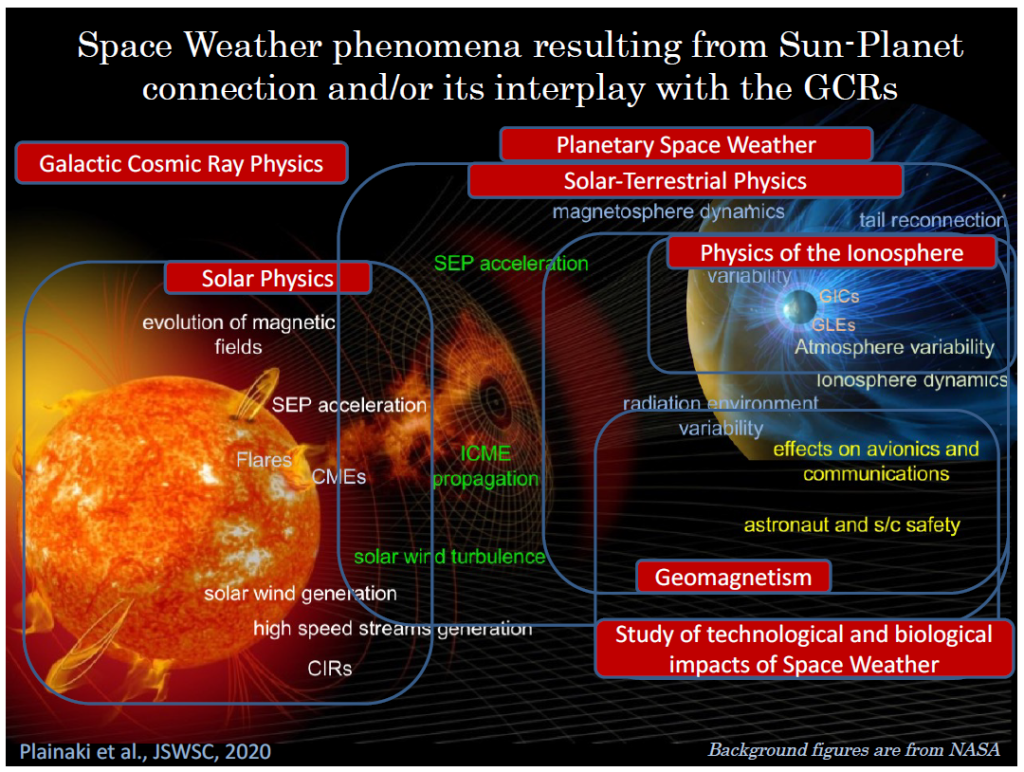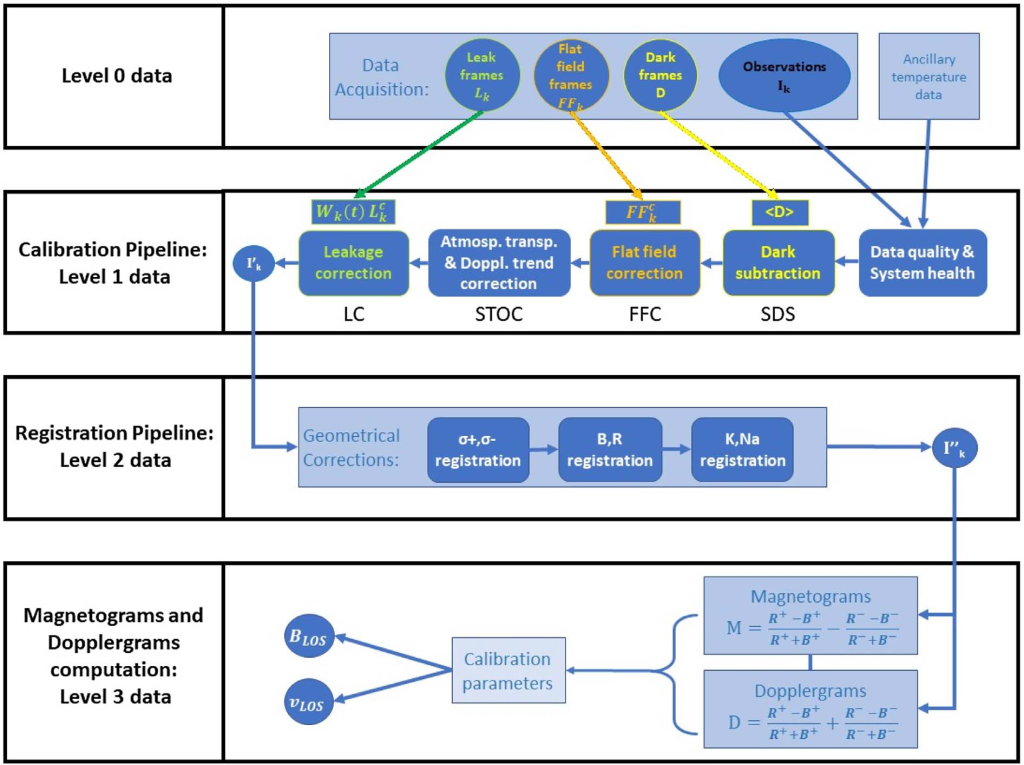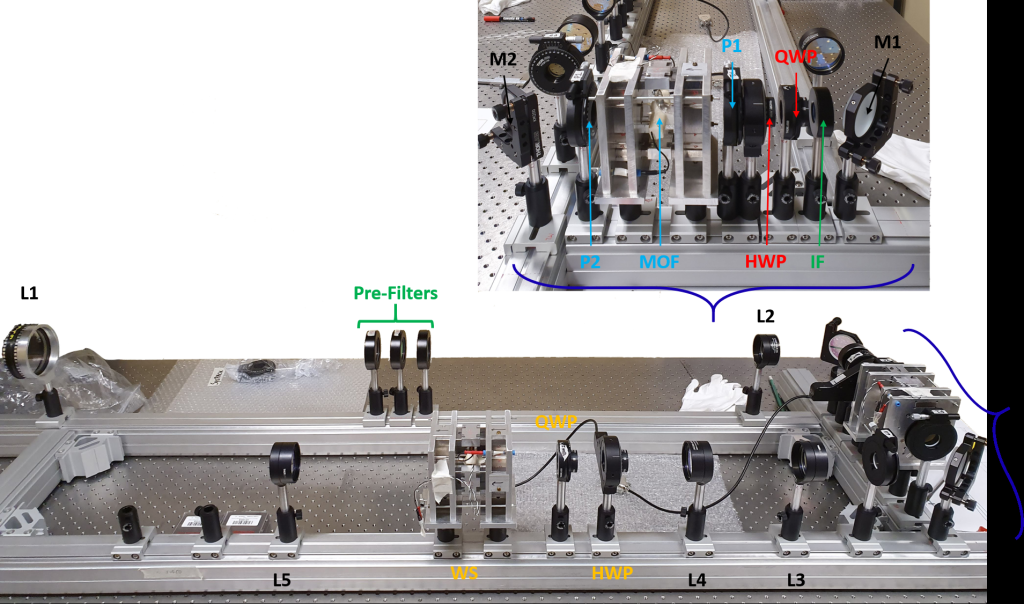Home » Instruments
Category Archives: Instruments
Current state and perspectives of Space Weather science in Italy
Papers from SWICo members
Plainaki Christina, Antonucci Marco, Bemporad Alessandro, Berrilli Francesco, Bertucci Bruna, Castronuovo Marco, De Michelis Paola, Giardino Marco, Iuppa Roberto, Laurenza Monica, Marcucci Federica, Messerotti Mauro, Narici Livio, Negri Barbara, Nozzoli Francesco, Orsini Stefano, Romano Vincenzo, Cavallini Enrico, Polenta Gianluca, Ippolito Alessandro
This paper presents a brief state-of-the-art in Space Weather science in Italy and discuss some ideas on a long-term plan for the support of future scientific research in the related disciplines. Italian teams contributed in the advancing of our knowledge on the properties and evolution of the Space Weather phenomena with observational campaigns from space and from the ground. Numerous Space Weather forecasting and now-casting modeling efforts have resulted in a remarkable add-on to the overall progress in the field, at both national and international level. The Italian Space Agency participated several times in space missions related to Space Weather; indeed, the development of new instrumentation for future Heliophysics and Space Weather space missions will be very important for the Italian scientific and industrial communities.

The Italian Space Agency aims to assess the possibility to develop a national scientific Space Weather data centre to encourage synergies between different science teams with interest in the field and to motivate innovation and new mission concept development. Alongside with the proposed recommendations, this paper also discusses how the Italian expertise could complement international efforts in a wider international Space Weather context.
Publication: Plainaki C., Antonucci M., Bemporad A., Berrilli F., Bertucci B., Castronuovo M., De Michelis P., et al., 2020, JSWSC, 10, 6. doi:10.1051/swsc/2020003. https://www.swsc-journal.org/articles/swsc/abs/2020/01/swsc190014/swsc190014.html
Data reduction pipeline for MOF-based synoptic telescopes
Papers from SWICo members
Roberta Forte, Francesco Berrilli, Daniele Calchetti, Dario Del Moro, Bernhard Fleck, Cynthia Giebink, William Giebink, Luca Giovannelli, Stuart Mark Jefferies, Allister Knox, Maria Magrì, Neil Murphy, Garry Nitta, Maurizio Oliviero, Ermanno Pietropaolo, Wayne Rodgers, Stefano Scardigli, Giorgio Viavattene
The synoptic telescopes based on Magneto Optical Filters (MOF) using different lines are capable of measuring the line-of-sight Doppler velocity and magnetic field over the full solar disk at different ranges of height in the Sun’s photosphere and low chromosphere. Instruments like the MOTH (Magneto-Optical filters at Two Heights), using a dual-channel based on MOFs operating at 589.0 nm (Na D2 line) and 769.9 nm (K D1 line), the VAMOS instrument (Velocity And Magnetic Observations of the Sun), operating at 769.9 nm (K D1 line), and the future TSST (Tor Vergata Synoptic Solar Telescope), using a dual-channel telescope operating at 656.28 nm (H-alpha line) and at 769.9 nm (K D1 line), allow to face both aspects, the scientific and the operative related to Space Weather applications.

The MOTH, VAMOS and TSST data enable a wide variety of studies of the Sun, from seismic probing of the solar interior (sound speed, rotation, details of the tachocline, sub-surface structure of active regions), to the dynamics and magnetic evolution of the lower part of the solar atmosphere (heating of the solar atmosphere, identification of the signatures of solar eruptive events, atmospheric gravity waves, etc.), to the 3D reconstruction of the solar atmosphere and flare locations. However, the use of MOF filters requires special care in calibrating the data for scientific or operational use. This work presents a systematic pipeline that derives from the decennial use of MOF’s technology. More in detail, the pipeline is based on data reduction procedures tested and validated on MOTH data acquired at Mees Solar Observatory of the University of Hawaii Haleakala Observatories and at South Pole Solar Observatory (SPSO), at the Amundsen-Scott South Pole Station in Antarctica, during Antarctica Summer Campaign 2016/17.
Publication: Forte R., Berrilli F., Calchetti D., Del Moro D., Fleck B., Giebink C., Giebink W., et al., 2020, JSWSC, 10, 63. doi:10.1051/swsc/2020065. https://www.swsc-journal.org/articles/swsc/full_html/2020/01/swsc200064/swsc200064.html
The Tor Vergata Synoptic Solar Telescope (TSST): A robotic, compact facility for solar full disk imaging
Papers from SWICo members
Luca Giovannelli, Francesco Berrilli, Daniele Calchetti, Dario Del Moro, Giorgio Viavattene, Ermanno Pietropaolo, Marco Iarlori, Vincenzo Rizi, Stuart Mark Jefferies, Maurizio Oliviero, Luciano Terranegra, Neil Murphy
By the continuous multi-line observation of the solar atmosphere, it is possible to infer the magnetic and dynamical status of the Sun. This activity is essential to identify the possible precursors of space weather events, such as flare or coronal mass ejections. We describe the design and assembly of TSST (Tor Vergata Synoptic Solar Telescope), a robotic synoptic telescope currently composed of two main full-disk instruments, a Hα telescope and a Potassium (KI D1) magneto-optical filter (MOF)-based telescope operating at 769.9 nm.

TSST is designed to be later upgraded with a second MOF channel. This paper describes the TSST concepts and presents the first light observation carried out in February 2020. We show that TSST is a low-cost robotic facility able to achieve the necessary data for the study of precursors of space weather events (using the magnetic and velocity maps by the MOF telescope) and fast flare detection (by the Hα telescope) to support Space Weather investigation and services.
Publications: Giovannelli L., Berrilli F., Calchetti D., Del Moro D., Viavattene G., Pietropaolo E., Iarlori M., et al., 2020, JSWSC, 10, 58. doi:10.1051/swsc/2020061. https://www.swsc-journal.org/articles/swsc/full_html/2020/01/swsc200063/swsc200063.html
Daniele Calchetti, Giorgio Viavattene, Luciano Terranegra, Ermanno Pietropaolo, Maurizio Oliviero, Neil Murphy, Start M. Jefferies, Luca Giovannelli, Dario Del Moro, and Francesco Berrilli, Proc. SPIE 11445, Ground-based and Airborne Telescopes VIII, 114452T (13 December 2020); https://doi.org/10.1117/12.2562454
Calchetti D, Viavattene G, Berrilli F, Del Moro D, Giovannelli L, Oliviero M. 2020. Journal of Physics Conference Series, Vol. 1548. https://doi.org/10.1088/1742-6596/1548/1/012005
Viavattene G, Calchetti D, Berrilli F, Del Moro D, Giovannelli L, Pietropaolo E, Oliviero M, Terranegra L. 2020. Il Nuovo
Ciment C (Ed.), Vol. 43 of Il Nuovo Cimento C, 120 p. https://doi.org/10.1393/ncc/i2020-20120-6
